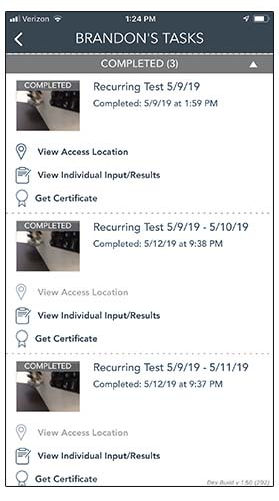
Managing People – Deep Dive
PinPoint is a flexible app that can be used in multiple ways. It can be used as a tool to self-assign tasks or used with a team.

Accessing and Adding People

Tap on the “People” button to see a list of people and groups that have been created. To add a new user from within the app, tap on the Create Individual button and simply enter their name and email.


The new user will receive your invite as an email. Inside that email is an activation code. It is a one time code as the new user stays logged into the app. Should they get logged out for some reason they can re-enter that activation code or request a new pass code they can set themselves.
You also have the option of setting Roles for users that you invite to the app. Broadly speaking Roles fall into the following categories of an administrative power user or a feature-restricted end-user.
The default is a user with all of the features enabled.
For end-users you can turn on / off features of the app. For example, do you have workers who you only want to be able to complete tasks that are sent to them? There is a role for that. Do you have experts in the field who should create content and upload to the platform? There is a setting for that, as well.
-
Administrator: Access to the complete app experience
-
End-User: By default, a user has all of the features enabled. Switches can enable or disable the following:
-
Allow users to view On Demand tasks
-
Allow users to create Actions
-
Allow users to create Assets
-
The PinPoint UI changes based on the Role selected for a user. Here are two examples of an administrator / manager and an end-user UI with features limited to completing regular or on demand tasks.

Administrator Home Screen

End-User Home Screen
You can also add people into groups. Right now a user can only exist in a single group.

Also in the “People” list view you can tap into each individual user and see the results of the tasks assigned to them. Depending on the type of task you’ve built there is a wealth of information available including completion statuses, scores, responses, and access locations. Even a PDF certificate for documentation or CSV export.
